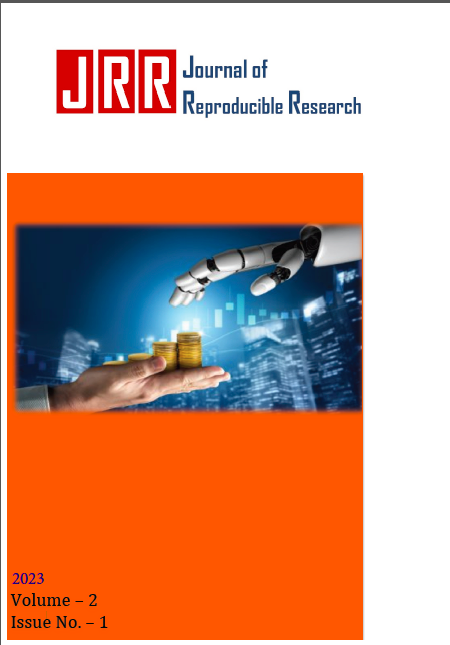A study on the influence of consumers' willingness to buy Starbucks
Keywords:
Perceived Value, Product Type, Product Price, Consumer Purchase Intention, StarbucksAbstract
The objectives of this study were (1) To identify the factors that influence consumers' willingness to buy Starbucks, (2) To examine the relationship between perceived value, product type, product price and consumer purchase intention, (3) To construct an effective and feasible management framework to promote Starbucks consumers' purchase intention. This quantitative research employed a questionnaire to investigate the factors influencing consumer purchase intentions at Starbucks. The questionnaire was designed, formatted, distributed, and collected electronically, and the data were analyzed using data processing software. This study utilized a simple random sampling method for distributing questionnaires online. According to data from the "Bulletin of Key Data on the Resident Population of Nanchang, 2022", there are 4,453,100 individuals within the working age range of 16-59. Based on the sample calculation formula provided by Yamane (1967), the survey aimed to gather responses from 400 young Nanchang consumers. Major Findings: (1) Perceived value has a significant positive impact on Starbucks' purchase intentions. Social and emotional values within perceived value also play a role in influencing purchase intentions. Perceived quality has a positive effect on perceived value, which subsequently affects purchase intentions, (2) Product type has a significant positive moderating effect on the relationship between perceived value and purchase intentions for Starbucks. Similarly, there is a positive moderating effect of product type on the relationship between social and emotional values and purchase intentions, (3) The extent of the moderating effect of the variable (product price) varies significantly at different levels when perceived value influences purchase intentions.
References
Ana, C.T. & Dragan, B. (2018). The perception of e-services cape and its influence on perceived E-shopping value
and customer loyalty. Online Information Review, 2018, 42(7).
Anderson, E. W. & Fornell, C. (1994). Customer Satisfaction, Market Share, and Profitability: Findings from Sweden.
Journal of Marketing, Jul 1994, 58(3): 53-67.
Arne, F., Alexander, Z., Monika, K. & Thomas, R. (2014). Customer segmentation using unobserved heterogeneity in
the perceived-value-loyalty-intentions link. Journal of Business Research, 2014, 67(5).
Bruno, S. & Dariusz, D. (2015). The impact of brand communication on brand equity through Facebook. Journal of
Research in Interactive Marketing, 2015, 9(1).
Carmen, M. S., Dolores, M. F. & Alberto, C. (2012). The moderating effect of uncertainty-avoidance on overall
perceived value of a service purchased online. Internet Research, 2012, 22(2).
Deepak, S., Sarat, K. J. & Sushanta, T. (2019). Factors influencing the purchase intention of Consumers towards
remanufactured products: a systematic review and meta-analysis. International Journal of Production Research,
, 57(23).
Diamond, K. X. (2020). An empirical study on the relationship between environmental design and customers'
willingness to repurchase at Starbucks. Tianjin University of Finance and Economics, 2020.
Florian, K., Agnes, E. K., Klaus, M., Wiebke, M. & Julia, M. B. (2019). Influencing factors for the purchase intention
of consumers choosing bioplastic products in Germany Sustainable Production and Consumption, 2019, 19.
Gary, H. & Guy, A. (2013). The hierarchical effects of perceived quality on perceived value, satisfaction, and loyalty:
Empirical results from public, outdoor aquatic centers in Australia. Sport Management Review, 2013, 16(3).
Han, R. (2005). Research on Price Promotion Strategy Based on Consumer Perception. Huazhong University of
Science and Technology, 2005.
Han, C. X. (2015). The relationship between perceived tourism value and satisfaction and behavioral intention. Human
Geography, 2015, 30(03): 137-144+150.
Hui, C. H., Ya, T. C., Che, Y. Y. & Chung, W. L. (2014). Promote the price promotion: The effects of price promotions
on customer evaluations in coffee chain stores. International Journal of Contemporary Hospitality Management,
, 26(7).
Kou, S. N., Ma, X. C., Xu, S. R., Pan, L. C. (2018). Investigation of factors influencing wine purchase intention—
Jiaodong region as an example. Oenology Technology, 2018(05): 133-138.
Li, T. (2016). A study on the influence of advertising statements on purchase intention based on brand familiarity,
product attributes, and involvement. Knowledge Economics Ji, 2016(23): 42-43.
Lv, X. P. & Duan, Q. (2014). Research on the influence of nostalgic advertising appeal on consumers' purchase
intention: The moderating effect of nostalgic tendency. Zhejiang Business Research Research, 2014(00): 234-
Maja, A. K. & Vesna, Z. (2015). The external effect of marketing accountability in business relationships: Exploring
the role of customer perceived value. Industrial Marketing Management, 2015, 46.
Mao, Y. F. & Li, W. (2015). Study on the factors influencing the purchase intention of Ningxia high-quality Chinese
wolfberry based on the Logistic model. Journal of Central South University of Forestry Science and
Technology, 2015, 35(06): 134-138.
Mja, A. K. & Vesna, Z. (2015). The external effect of marketing accountability in business relationships: Exploring
the role of customer perceived value. Industrial Marketing Management, 2015, 46.
Naili, F. & Elia, A. (2015). Repeat Purchase Intention of Starbucks Consumers in Indonesia: A Green Brand Approach.
Market, 2015, 27(2).
Omar, S. I., Abdul, N. K.& Sandra, M. C. L. (2019). Value gets, value give the relationships among perceived value,
relationship quality, customer engagement, and value consciousness. International Journal of Hospitality
Management, 2019, 80
Downloads
Published
How to Cite
Issue
Section
Categories
License
Copyright (c) 2023 Journal of Reproducible Research

This work is licensed under a Creative Commons Attribution 4.0 International License.
Copyright of the article belongs to Journal of Reproducible Research (JRR) once the paper is ACCEPTED for publication. Author(s) agrees to this terms, during submission.





